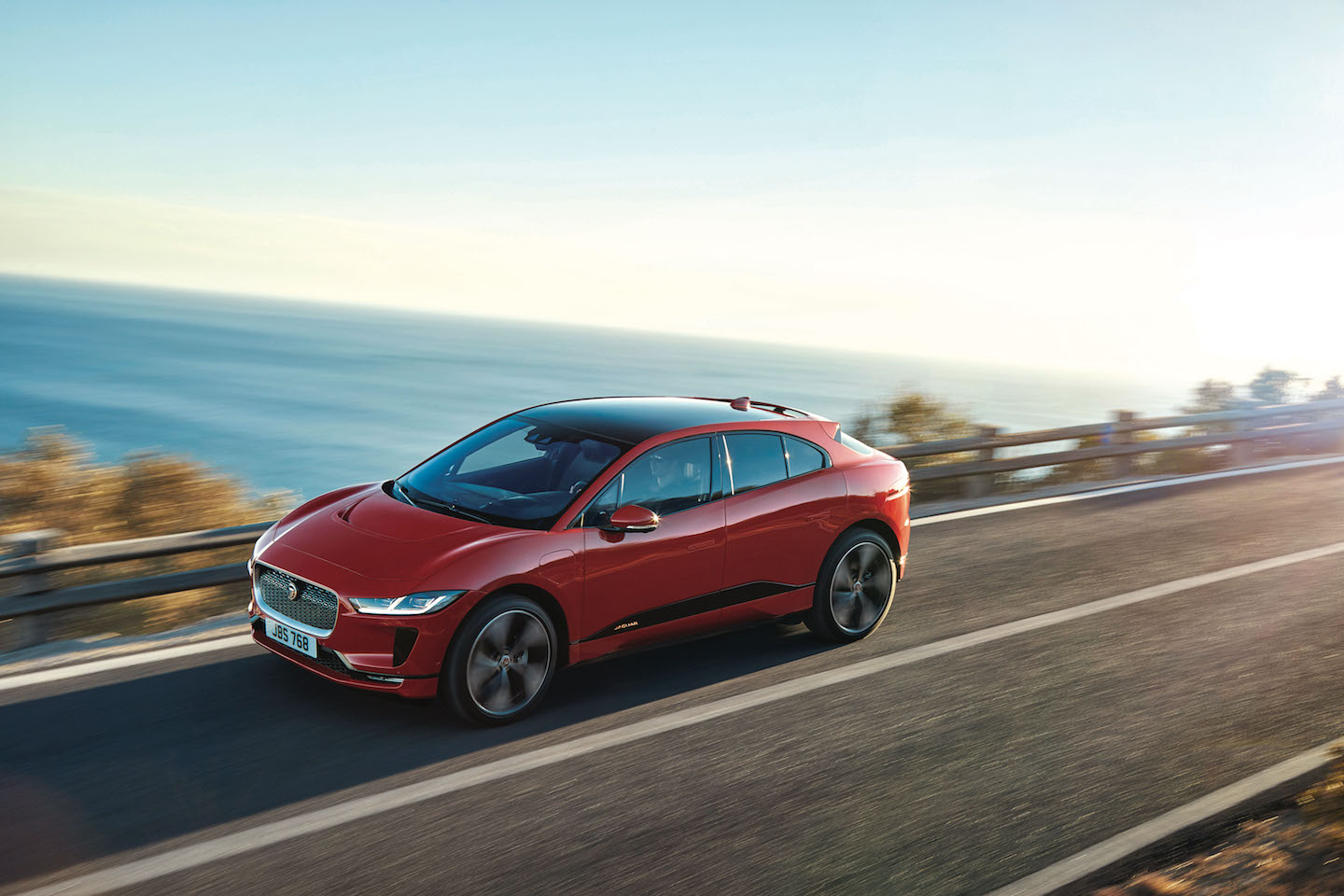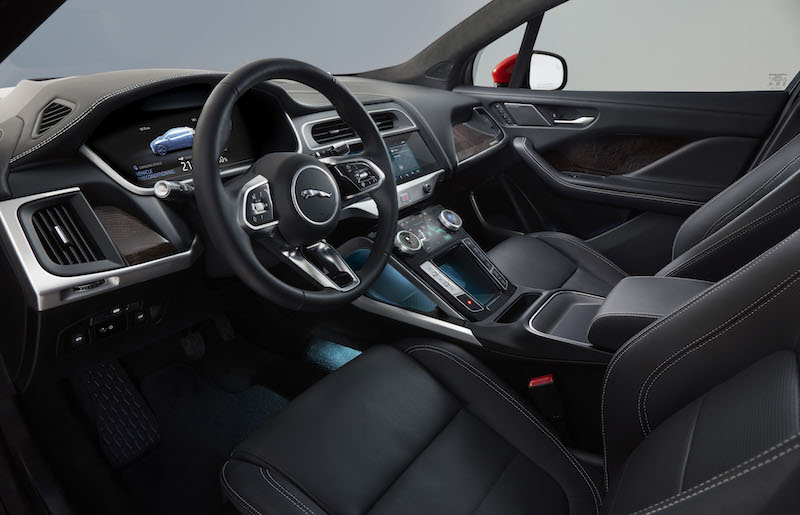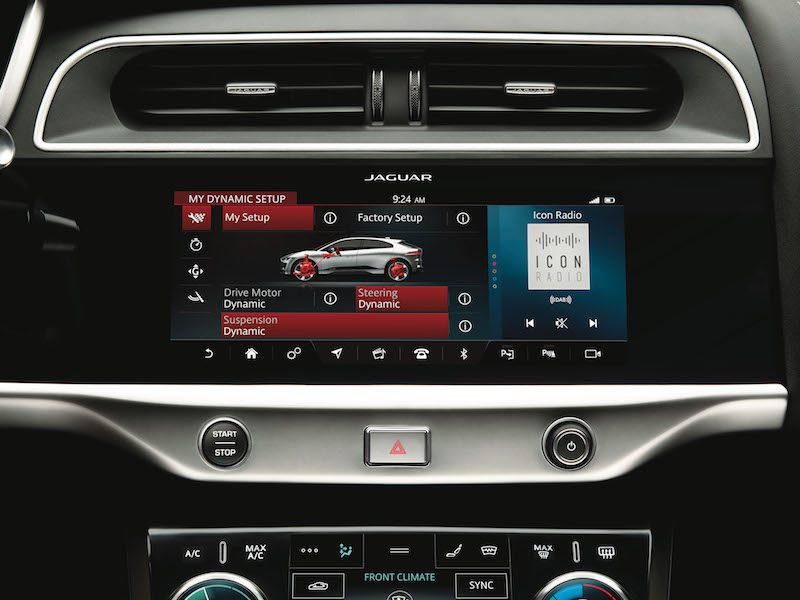
The all-electric Jaguar I-Pace (Photo: Jaguar)
Jaguar was one of the sponsors of the 2018 EY World Entrepreneur of the Year Awards in June and made good use of the opportunity by showcasing its all-new electric I-Pace at the event. Open for orders in the UK and Europe (no confirmation yet on its availability in Malaysia), the I-Pace was also available for test drives on the sloping, curvaceous roads of Monte Carlo, Monaco — the very ones Formula One Grand Prix drivers confront each season.
Although it seems unusual that the ultra-luxurious and rather traditional Indian-owned British-born carmaker would want to wade into the EV game, electric mobility is a future all marques have to face. “Where other companies talk about the future, we build it. We have torn up the rule book to create the newest member of the Pace family — the all-electric Jaguar I-Pace With zero tailpipe emissions, no CO2 and no particulates, it moves us dramatically closer to our vision of a clean, safe and sustainable future,” says Jaguar Land Rover CEO Dr Ralf Speth.
Our drive begins at the Fairmont Monte Carlo, where there’s enough time to admire the car’s good looks before we depart. Its sleek, coupe-like silhouette is influenced by the C-X75 supercar, with a short, low bonnet, aero-enhanced roof design and curved rear screen. This cab-forward design contrasts with its squared-off rear, which I am told helps reduce the drag co-efficient. To optimise the balance between cooling and aerodynamics, Active Vanes in the grille open when cooling is required but close when not needed to redirect air through the integral bonnet scoop, smoothing airflow.

Jaguar Land Rover’s new Matrix LED lighting technology emphasises the clean lines of I-Pace, resulting in compact headlights that incorporate Jaguar’s trademark double-J graphic with sweeping indicators.
A mid-sized SUV, I-Pace’s cab forward design and EV powertrain means it boasts interior space comparable to large SUVs. In the rear, legroom is 890mm and with no transmission tunnel, there’s a useful 10.5-litre central storage compartment. In the rear, tablet and laptop stowage is found beneath the seats, while the rear luggage compartment offers 656 litres of capacity, which expands to 1,453 litres with the seats folded flat.
Inside, the layout optimises space for passengers. Sophisticated materials — including the option of a premium textile Kvadrat interior — and exquisite attention to detail identify it as a true Jaguar. A start button gets things going with a barely perceptible hum, and I quickly fiddle around with the new Touch Pro Duo infotainment system, which is remarkably intuitive with its combination of touchscreens, capacitive sensors and tactile physical controls.
Something owners will really appreciate is the way the car’s EV navigation system assesses the topography of the route to one’s destination and insights from previous journeys, including driving style, and calculate personalised range and charging status with exceptional accuracy for maximum driver confidence.
We start the drive on the famous Grand Hotel Hairpin, which is so tight drivers have to reduce their speed to 30kph. This cuts into the Portier corner where Ayrton Senna famously crashed in 1998 and onwards to the Mirabeau corner, which usually sees cars rush into the tight right-hander before the slowest and one of the most memorable turns on the F1 calendar. It’s on these curves that I was able to experience the car’s supreme handling, which comes from a bespoke aluminium architecture that uses advanced riveting and bonding technology to deliver a light, stiff body structure. Together with the structural battery pack, it has a torsional rigidity of 36kNm/degree — the highest of any Jaguar.

Down the tunnel and the toward the Nouvelle chicane, I get to test the I-Pace’s agility and speed — nothing to complain about here whatsoever. Two Jaguar-designed electric motors, which feature driveshafts passing through the motors themselves for compactness, are placed at each axle, producing exceptional combined performance of 400PS and 696Nm, and all-wheel-drive, all-surface traction. The battery sits as low down as possible between both axles, with a seal between the housing and the underfloor. This location enables perfect 50:50 weight distribution and a low centre of gravity. The car is reputedly able to achieve 0 to 100kph in 4.5 seconds but I couldn’t quite pull this off — purely from a lack of skill and bravado on my part.
Okay, so it looks good and drives great, but what about the range? Ah, the I-Pace delivers on this too, with a state-of-the-art 90kWh lithium-ion battery using 432 pouch cells, resulting in a range of about 480km. You’ll be able to get 0 to 80% battery charge in 85 minutes with normal DC charging at 50kW, while home charging with an AC wall box (7kW) will achieve the same state of charge in just over 10 hours — ideal for overnight charging.
It has only been relatively avant-garde brands like Tesla Motors that have put electrically-powered cars into the hands of everyday consumers, which limit their reach. But when established marques like Jaguar, whose stock in trade has always been in petrol-powered automobiles, get into the EV game, you know things are getting serious. And we can’t wait.
This article appeared on Aug 13, 2018 in The Edge Malaysia.


